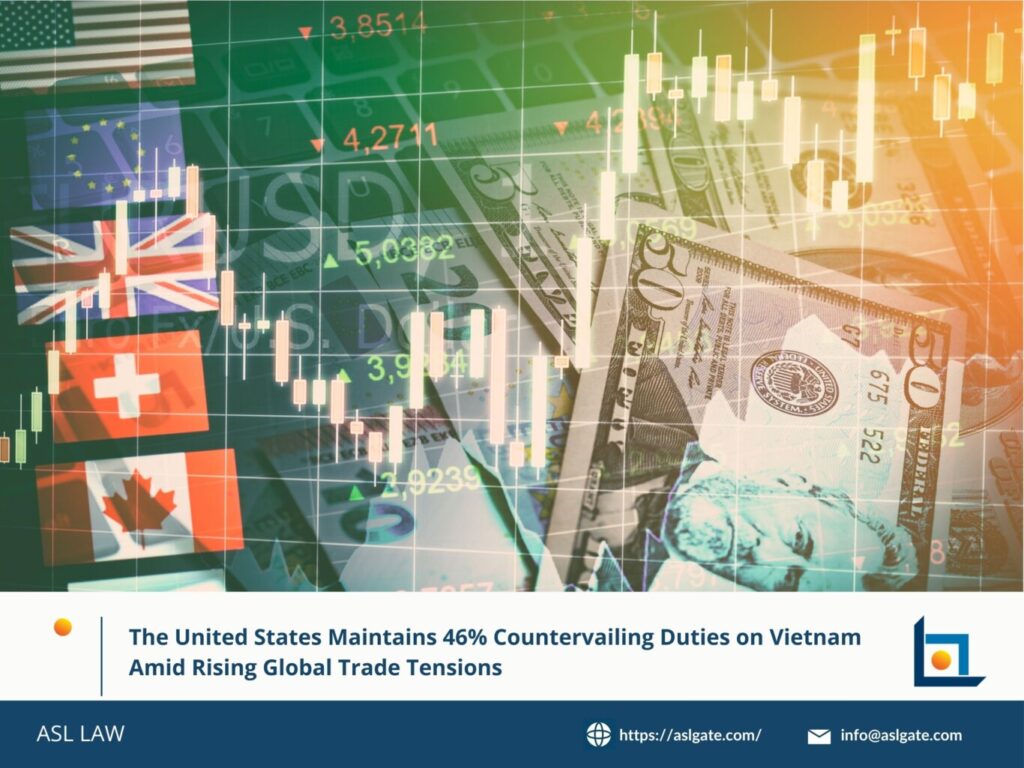Starting at 12:01 AM on April 9, 2025 (U.S. time), the United States officially implemented a new round of countervailing duties on imports from dozens of major trading partners. These tariffs range from 11% to 84%, in accordance with the plan announced by President Donald Trump on April 2.
Among the affected countries, Vietnam remains subject to a 46% tariff—unchanged from the previously announced rate—due to the lack of progress in bilateral negotiations. This is a significant figure in the context of escalating global trade tensions.
1. Countervailing Duties Imposed on Vietnam
Under President Trump’s trade plan, goods imported into the U.S. from key trading partners now face higher tariffs, increasing from the baseline of 10% (effective last weekend) to between 11% and 84%.
Specifically, Vietnam is subject to a 46% tariff—lower than China, which faces the highest rate at 84%, but still notably high compared to other countries such as the European Union, Malaysia, Japan, South Korea, and India (20–26%). This significantly increases the total additional tax burden on Vietnamese exports to the U.S., putting substantial pressure on exporters.
However, not all goods are affected by the new tariffs. Items such as aluminum, steel, automobiles, auto parts, gold, copper, pharmaceuticals, semiconductors, and wood products—which had already been subjected to a 25% tariff—will continue to be taxed at that rate.
Certain energy sources and minerals not available in the U.S. are exempt. Notably, Canada and Mexico are not subject to additional countervailing duties due to the provisions of the United States–Mexico–Canada Agreement (USMCA), though they previously faced 25% tariffs on most goods.
2. Global Impact and Vietnam’s Response
The U.S. countervailing duty policy has sent shockwaves through global markets over the past week. Stock markets in the U.S., Asia, and Europe have fallen sharply due to fears of inflation, economic slowdown, and supply chain disruptions. Gold prices reached new highs before a sell-off for profit-taking. Meanwhile, international economists and financial institutions have warned of a possible U.S. recession within the next 12 months.
U.S. Federal Reserve Chair Jerome Powell issued a caution, stating that the new tariffs could drive up inflation and slow down economic growth.
In Vietnam, the 46% tariff has raised considerable concerns, especially given that exports to the U.S. account for approximately 25% of the nation’s GDP. Major export sectors such as textiles, footwear, electronics, and agricultural products face serious risks. On public forums and social media, many have suggested that Vietnam should diversify its export markets to reduce dependence on the U.S. and intensify negotiations to mitigate the impact.
Vietnam’s Prime Minister has ordered the formation of a rapid response task force to address the situation. The task force has seven days to propose solutions, as the 46% tariff could cause significant damage without prompt adjustment. Vietnam has also requested a postponement of the new tariffs and an expansion of bilateral negotiations, while committing to increased purchases of U.S. goods, including defense and security products, to help narrow the trade imbalance.
3. Context of Escalating Global Trade Tensions
President Trump’s countervailing tariff strategy targets not only Vietnam but over 180 countries, with the stated aim of “balancing trade” and protecting American workers. China, with the highest tariff rate of 84%, is the hardest hit. Other nations like Cambodia and Laos also face high tariffs (up to 49%).
This reflects the Trump administration’s strategy of reshaping global trade relations, though it has raised fears of a full-scale trade war.
According to U.S. Treasury Secretary Scott Bessent, nearly 70 countries have reached out to Washington in an attempt to negotiate more favorable terms and minimize the impact. However, as of the end of April 8, 2025, the U.S. has not revised its position, highlighting the Trump administration’s firm stance on the matter.
4. Outlook and Solutions
While the 46% tariff on Vietnam presents considerable challenges, it also provides an opportunity for the country to restructure its economy, diversify markets, and enhance domestic production. Businesses will need to adapt flexibly, while the government can boost cooperation with other markets such as the EU, ASEAN, and Africa to reduce reliance on the U.S.
The United States’ decision to maintain a 46% countervailing duty on Vietnam, effective April 9, 2025, is part of President Trump’s broader global trade strategy aimed at safeguarding domestic economic interests amid intensifying global trade tensions. This move presents a serious challenge for Vietnam and global trade at large, with potential consequences including inflation, recession, and supply chain breakdowns.
Moving forward, both countries must strengthen dialogue to find a balanced resolution, while Vietnam must proactively adjust to minimize the impact and sustain long-term growth.
If the situation continues to deteriorate, Vietnamese businesses and government agencies must be ready for worst-case scenarios, while also seizing the opportunity to restructure and pursue long-term development. This is a time of great challenge—but also a pivotal moment for Vietnam to assert its role on the global trade map.
ASL Law is a leading full-service and independent Vietnamese law firm made up of experienced and talented lawyers. ASL Law is ranked as the top tier Law Firm in Vietnam by Legal500, Asia Law, WTR, and Asia Business Law Journal. Based in both Hanoi and Ho Chi Minh City in Vietnam, the firm’s main purpose is to provide the most practical, efficient and lawful advice to its domestic and international clients. If we can be of assistance, please email to [email protected].
ASL LAW is the top-tier Vietnam law firm for tax law consulting service. If you need any advice, please contact us for further information or collaboration.

 Tiếng Việt
Tiếng Việt 中文 (中国)
中文 (中国) 日本語
日本語

